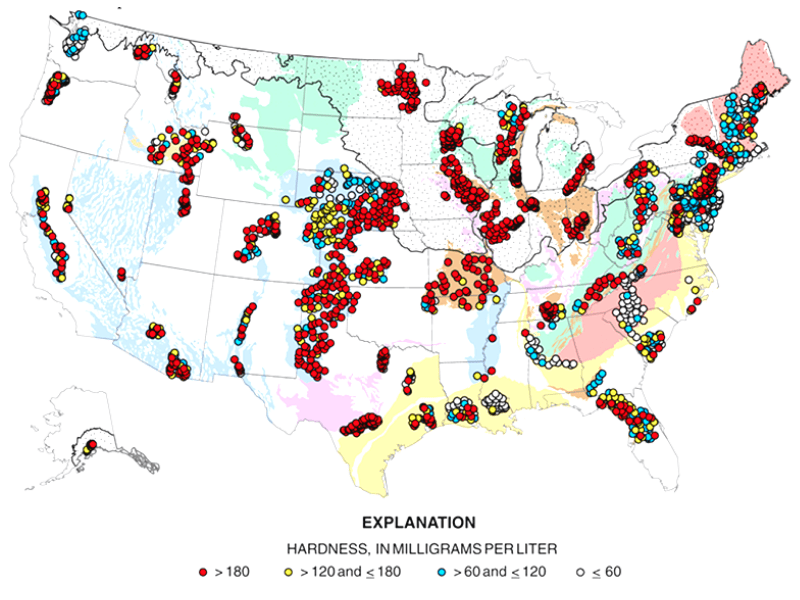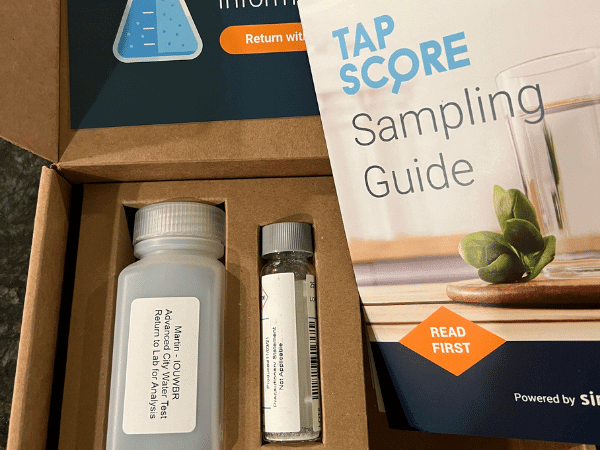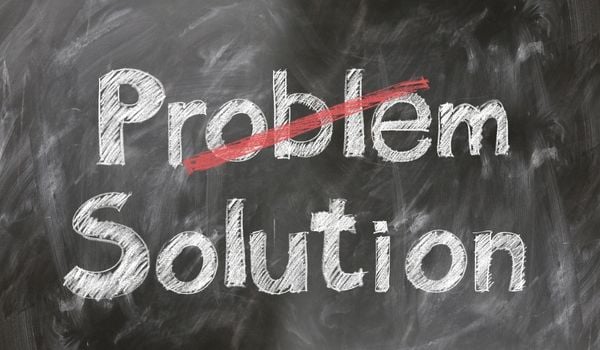Buying a water softener isn’t just about picking a brand — it’s about choosing a system that actually fits your household’s needs. Too small, and you’ll burn through salt and resin. Too big, and you’re wasting money on capacity you don’t use.
The good news? You don’t need a calculator or a plumbing degree. Just a few key numbers — and this guide.
✅ Quick Takeaways
- Figure out your daily water use (hint: 80 gallons per person is standard)
- Get your water hardness level in grains per gallon (GPG) — test it if needed
- Multiply usage × hardness = your daily softening requirement
- Add extra capacity for iron content or larger households
- Choose a system that regenerates every 3–7 days, with about 25% buffer capacity
- Consider factors like salt efficiency, flow rate, and footprint before you buy
💧 Step 1: Know Your Water Hardness & Usage
Before you pick a system, you’ll need two things:
- How much water your household uses daily
- How hard your water is (in grains per gallon — GPG)

🧪 How Hard Is Your Water?

Hardness = the amount of calcium and magnesium in your water. City water users can often find it on their utility’s report. If you’re on a well, get your water tested — don’t guess.
| 💧 Classification | 📏 Grains per Gallon (GPG) | 🔬 Parts Per Million (PPM) |
|---|---|---|
| 🟢 Soft | 0–3.5 | 0–60 |
| 🟡 Moderately Hard | 3.6–7.0 | 61–120 |
| 🟠 Hard | 7.1–10.5 | 121–180 |
| 🔴 Very Hard | 10.6+ | 181+ |
💡 Convert mg/L or PPM to GPG by dividing by 17.1
🚿 Estimating Water Use
Most people use about 80 gallons of water per day. Multiply that by your household size to get a daily average.
Example:
- 4 people × 80 gallons = 320 gallons/day
- 5 GPG hardness × 320 gallons = 1,600 grains/day
- That’s your daily softening requirement.
🔄 Step 2: Adjust for Iron & Regeneration Schedule

🧪 Adjusting for Iron
Add 5 grains of hardness for every 1 mg/L of iron detected.
Example:
- If your water has 2.0 mg/L of iron →
- Add 10 GPG to your base hardness
- New total: 15 GPG
📆 Planning for Regeneration
Softeners regenerate to flush out minerals. Ideally, they do this every 3 to 7 days to stay clean and efficient.
To find your total grain capacity needs, multiply:
Daily Softening Grains × Desired Days Between Regeneration
Example:
- 15 GPG × 320 gallons/day = 4,800 grains/day
- 4,800 × 7 days = 33,600 grains
➕ Add Buffer Room
To prevent salt waste and performance dips, aim to regenerate when the tank hits 75% capacity. So, add 25% cushion:
33,600 × 1.25 = 42,000 grain capacity needed
🎯 In this example, a 40,000–48,000 grain softener would be a perfect match.
⚙️ Step 3: Choose a System That Matches Your Home

Once you’ve nailed the size, it’s time to look at efficiency, pressure, and fit — all of which can affect how well your softener performs day-to-day.
🧂 Still comparing systems or not sure which type fits your setup? Here’s a full guide to water softeners — from sizing tips to installation and maintenance.
🧂 Salt Efficiency
Some softeners use way more salt than others. Look for models with high salt efficiency ratings — usually measured in grains removed per pound of salt.
💡 Systems that regenerate more frequently or use full resin capacity each cycle tend to waste more salt and water.
You can also check for NSF/ANSI certification — it’s a sign the softener meets strict salt and water use standards.
🚿 Water Pressure & Flow Rate
If your softener can’t keep up with household demand, you’ll run into drops in water pressure — especially during showers or laundry.
| 🚿 Fixture | 💧 Typical Flow Rate |
|---|---|
| 🛁 Shower | 2–5 GPM |
| 🧺 Washing Machine | 3–5 GPM |
| 🚽 Toilet | 2–3 GPM |
| 🚰 Kitchen Faucet | 2–4 GPM |
We recommend choosing a system with at least 10–12 GPM flow rate if you have multiple bathrooms. For larger households, go higher.
⚠️ Struggling with weak water pressure already? Check your household pressure levels before installing a softener — it could be a limiting factor.
📦 Step 4: Make Sure It Fits — Physically & Practically

Sizing a softener isn’t just about grain capacity. You also need to consider how much space it takes up, how it’s labeled, and whether scaling up is worth it.
📐 Check Your Space
Most salt-based softeners come in dual-tank setups — one for resin, one for salt. Together, they can take up 10–12 square feet, with the resin tank standing up to 60 inches tall.
If space is limited, cabinet-style systems are more compact and great for small homes or tight basements.
🧮 Resin Capacity ≠ Grain Capacity
Some models list size by cubic feet of resin instead of grains — which can get confusing.
Here’s a rough conversion:
| 📦 Resin Volume | 🔢 Approx. Grain Capacity |
|---|---|
| 1.0 cf | 24,000–30,000 grains |
| 1.5 cf | 36,000–45,000 grains |
| 2.0 cf | 48,000–60,000 grains |
Actual performance depends on resin quality and salt efficiency.
🔼 Should You Size Up?
If you’re stuck between two sizes, going slightly larger is usually the better move. It lets the system regenerate less often — which can save salt and extend the resin’s life.
⚠️ But don’t go too big — softeners still need to regenerate at least once every 7 days to prevent bacteria growth and resin fouling.
Learn how regeneration works? Here’s a breakdown of softener cycles that explains what happens behind the scenes.
🚫 Not a Fan of Salt? You’ve Got Options

If you’re looking for low-maintenance water conditioning without the salt, a salt-free system might be a better fit. These don’t remove hardness minerals — instead, they help prevent scale buildup by neutralizing calcium and magnesium.
They’re ideal for folks on: low-sodium diets or those who want to avoid hauling heavy bags of salt.
💡 Curious how they compare? Here’s a full look at salt-free water conditioners and when they make sense.
✅ Final Thoughts
Choosing the right water softener size isn’t complicated — but it does take a little math and a bit of planning. By factoring in your: water hardness, household usage, and system efficiency — you’ll avoid underperforming models and overspending on salt.
Whether you’re going for full-scale softening or exploring salt-free alternatives, the right size system means better water, fewer headaches, and longer-lasting performance.
🧠 A well-sized softener doesn’t just save you money — it saves your system.
 90 people found this helpful. Was this guide helpful to you?
90 people found this helpful. Was this guide helpful to you? 

